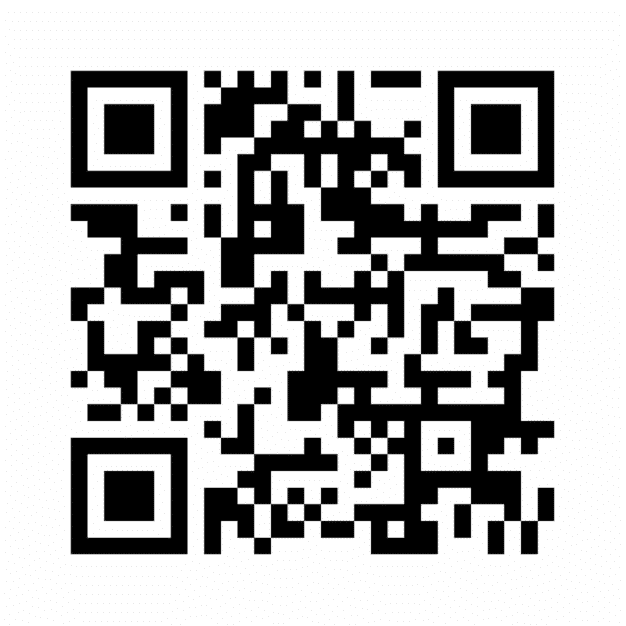Ultimate Guide to Boosting Trade Show Results With Inbound Marketing
Promoting your brand at an event or trade show is an awesome opportunity to attract new audiences, re-connect with customers and seize sales opportunities. But is your business guilty of not making the most out of your trade show marketing investment?
Often, marketing managers face a lot of pressure to plan or create a trade show marketing strategy within a very tight timeframe. Sometimes this time restriction leaves little time to figure out a watertight plan to win more business and effectively leverage digital channels. Other times, marketing managers make the mistake of focusing solely on pre-event marketing without planning how to effectively engage and convert leads into sales after the event.
What is the secret to successful trade show marketing?
The best way to successfully market your trade show is to invest in a coordinated inbound marketing strategy that encourages your sales and marketing to work in unison and reinforce one another. Integrating inbound digital marketing into all stages of your trade show marketing – pre-event, during the event and post-event – can improve both your marketing and sales. Ultimately, it will help you drive more qualified leads through your conversion funnel, lifting your return on investment for every trade show you attend. With a little bit of planning and about the same amount of effort, you can achieve much stronger results.
How do I use this guide?
This article aims to provide practical event marketing ideas to get you thinking. Once you’ve read through these tips, jot down ideas that feel relevant to your goals, put them into a written plan, and reuse and refine this plan for each trade show or event. The goal is to develop an efficient, replicable process to attract and nurture your qualified leads and continually improve it over time to maximise your effectiveness. Creating this structured plan, which can be adapted and improved over time, will help you make the most of your trade show.
The buyer’s journey: What are your goals and objectives?

Whether you want to generate leads or sales, your inbound marketing strategy should consider your buyer’s journey and interactions with your brand. Your goals may include:
Awareness: increasing brand awareness among your target audience
Consideration: generating leads (genuine marketing or sales qualified leads) or actively considering purchasing your services and products
Decision: enticing sales qualified leads to make a purchase at the event or to enter your sales funnel by starting the sales process.
Whatever your goals, it’s important to build specific, measurable objectives that will help you keep on track and allow you to continually improve over time. Therefore, once you pick your goals, make sure you also select some metrics you can use to measure your success.
#1 Pre-event marketing tips
The pre-event stage sets the foundation for the rest of the inbound marketing campaign. During this stage, you will be preparing and planning the marketing tactics for the rest of the campaign and designing tactics to ensure current customers, distributors and retailers know you’re going to be at the trade show (especially if they are local).
At this stage, your focus should be split between:
Awareness (80% focus): Your primary goal at this stage is to drive awareness about your attendance to increase brand visibility, foster positive associations between your brand and the event, and encourage more visitors to connect with you on the day.
Consideration (20% focus): Your secondary goal is to nurture potential customers with useful and entertaining content relevant to their interests to increase affinity for and encourage consideration of your brand.
Decision (0% focus): Since audiences are only interested in gathering information at this stage, the focus should centre on developing relationships and touch points to nurture a sale, rather than closing a sale.
Here is a step-by-step guide showing how to integrate a range of inbound marketing tactics for maximum effect in the pre-event marketing stage.
Tactic 1: Building awareness: Create a pre-event blog article
#1 Create a blog article offering high-quality content relevant to the interests of trade show visitors. For example, you might write about how trade show visitors can make the most of their day, or advertise a competition with a compelling prize. Be transparent about your brand’s identity but aim to be helpful, rather than self-promotional.
#2 Invite visitors to sign up for a competition with a form or lead flow.
#3 To increase your blog article’s reach, promote this blog article on your social media with paid advertising.
#4 Embed a remarketing pixel on the blog article page.
#5 Capture visitors’ details and remarket to them.
Tactic 2: Building awareness: Advertise on your website
#1 Build a landing page to showcase your participation at the trade show or event. Provide a preview of what you will offer on the day and give audiences attractive reasons to visit your stand.
#2 Create a form or lead flow on the landing page so audiences can schedule a meeting with you at the event.
#3 Include a banner on your website’s homepage that links through to the landing page.
#4 Create a second landing page where visitors can sign up to participate in a competition.
#5 Embed a remarketing pixel on both landing pages.
#6 Remarket to website visitors.
Tactic 3: Building awareness: Create social posts and promoted content
#1 Target the social media channels you typically use and make sure they are relevant to your market. Depending on your industry, you may consider Facebook, Twitter, LinkedIn, Instagram, YouTube or Pinterest.
#2 Craft an exciting social media campaign to publicise your presence at the upcoming trade show. Give enticing sneak peeks into your trade show booth experience.
#3 Create mini native advertising posts related to the trade show.
#4 Advertise a giveaway or exclusive content for people who will visit your trade show booth.
#5 Curate content about the event on social media.
#6 Use geographic and interest targeting to promote your content to relevant audiences in the geographic area and to existing customers.
#7 To boost your exposure, use the trade show’s social media handle or post to its Facebook page.
#8 Drive your audience to your event-themed landing page or blog article.
Tactic 4: Building awareness: Create an email marketing campaign
#1 Design a personalised email for existing customers to promote the benefits of attending the trade show and give a glimpse into your exciting activities on the day.
#2 Within the email, offer valuable blog content tailored to your customers’ interests and needs.
#3 Target your email marketing campaign to customers that live and work in the trade show’s geographic area.
#4 Include a coupon that invites your customers to visit the booth for a special gift.
#5 Invite customers to set up an appointment (on a landing page with a remarketing pixel) or meet you in person at the event.
#2 During the event marketing tips
To maximise marketing and sales opportunities, it’s important to nurture leads throughout the event. At the trade show, your marketing and sales teams should be united in their understanding of how your company will meet your goals and objectives.
At this stage, your focus should be divided between:
Awareness (20% focus): Building awareness is a secondary goal that naturally supports and co-exists alongside the primary goal of consideration.
Consideration (60% focus): At the event, your audience is forming critical impressions and actively considering your brand for purchase. Include calls-to-action to motivate real-time interactions during the event and nurture leads with positive experiences.
Decision (20% focus): To seize opportunities to complete a sale during the stage, it’s important to create a smooth sales process to complete such transactions. However, this stage should focus on nurturing leads through the conversion funnel, rather than closing sales.
Tactic 1: Experiential marketing: Make a strong impression with fun and remarkable experiences
#1 Design an experiential marketing campaign to directly engage your audience, encourage them to participate in the production and co-creation of a brand experience, and strengthen their relationship with your brand.
#2 Build a unique, memorable trade show stand that maximizes social media photo opportunities. Think outside the box with creative, eye-catching designs.
#3 Create an interactive, social media-worthy experience, themed around your product. Demonstrate your product in a fun, creative and memorable way or run a competition that highlights its benefits and practical uses. The more involved your audience, the better.
#4 If your brand and audience have a sense of humour, inject some comedy and fun.
#5 Offer exclusive deals on your products or prizes relevant to your industry.
#6 Capture lead details by inviting attendees to sign up to participate.
Tactic 2: Photo competitions: Maximise social media photo opportunities
#1 Host a competition and award the best photo (shared on social media with a specific hashtag) with a prize or simply make compelling and fun photo opportunities with mascots, cut-outs, etc.
#2 Arrange for your team to take photos of each competition entry (for example, the most creative photo using a product) and send the photo to the attendee’s email address.
#3 Instruct staff to share a high-quality photo of your creative trade show stand with a compelling or humorous call to action on the event’s social media page to attract foot traffic.

Tactic 3: Lead generation: Collect email addresses electronically
#1 To streamline data entry, gather email addresses using a tablet or laptop, instead of pen and paper.
#2 Set up an auto-responder that sends when a subscriber submits the form.
#3 Include a link to a specific landing page in the auto-responder.
#4 Include a remarketing pixel on this landing page.
#5 Ensure you have paper forms on hand on the day as a backup.
Tactic 4: Lead generation: Encourage attendees to sign up on a mobile device
#1 Design a number of compelling, premium content offers, customised to each buyer persona, with practical tips they can use right away. If you need more info, check out our article on how to create buyer personas.
#2 Invite attendees to sign up to your email marketing list or a specific landing page to download the premium content offer of their choice using their own digital device.
#3 Encourage them to click through on an activation email.
#4 Remarket to visitors and subscribers.
Tactic 5: Building awareness: Use social media strategically, when the platform is applicable to your market
#1 Encourage attendees to check in at your booth on Facebook for a small reward.
#2 Tweet live during the event to attract attendees to your stand using the event’s hashtag.
#3 Tweet people who use the event’s hashtag, inviting them to your booth for a giveaway.
#4 Schedule certain tweets ahead of time. Tweet time-restricted benefits or giveaways throughout the day.

Tactic 6: Building awareness: Display a QR code
#1 Include a QR code on your stand that lets attendees instantly connect with you on social media, subscribe to your blog, sign up to your email marketing, and check out your website.

#3 Post-trade show marketing tips
The time after the trade show is no time to slack off. This is your chance to capitalise on leads nurtured at the event and entice them through the conversion funnel. It is important to seize these opportunities quickly, to process them efficiently, and prioritise the leads that are most likely to convert.
In the post-trade show marketing stage, your focus should include:
Awareness (0% focus): Driving awareness is not an important focus at this stage.
Consideration (50% focus): One of your major goals at this stage is to continue providing valuable information that will help persuade your leads to convert.
Decision (50% focus): Now is the time to close sales where possible, and create a positive impression of your business to aid in buyers’ decision-making process and entice future sales.
Tactic 1: Lead follow up: Prioritise marketing automation
#1 If you have marketing automation in place such as HubSpot, track which leads complete certain digital actions, such as registering for a competition on a specific landing page, signing up to a lead flow, opening or engaging with an email, interacting with a remarketing campaign, or visiting a unique landing page post-event. Assign them a lead score based on their level of interaction.
#2 Trigger an automatic email to your sales team after a certain combination of these actions is performed.
#3 Encourage your sales person to contact this lead within a certain timeframe with a targeted offer based on their lead flow actions.

Tactic 2: Lead follow up: Strategically contact warm and cold leads
#1 Arrange for your sales team to target your most qualified leads within the first few days. A swift interaction after the event is critical before the lead becomes ‘cold’.
#2 For warm leads, call and reference the event (especially if you made contact at the event).
#3 Follow up on all sales inquiries and secure any orders quickly.
#4 Send an email to all leads, offering a second exclusive offer.
#5 Encourage your sales team to listen to the lead’s needs and highlight a compelling, high-quality piece of website content that establishes your business’ credibility with practical advice for solving their problem.
#6 For cold leads, send them an email reminder that this is their last chance to enter your competition. Invite them to read your post-event blog.
#7 Encourage open communication between your sales and marketing teams to prepare content in advance that anticipates your lead’s key concerns.
Tactic 3: Lead follow up: Create a strategic post-event blog article and sales offer
#1 Publish a high-quality blog article recapping highlights from the trade show with key takeaways, photos and videos.
#2 Within the blog article, offer a premium sales offer that differs from what you offered at the trade show.
#3 Ask your followers and subscribers to access a specific landing page to retrieve the sales offer.
#4 Promote the blog article and offer on social media.
#5 Invite your email subscribers to read the blog article.
#6 Send your leads a personalised Tweet inviting them to ‘relive the day’ with your event recap blog article if they do not click on the follow-up email.
#7 Remarket the landing page with paid search ads, social media and email marketing.
Tactic 4: Lead follow up: Thank attendees publicly on social media
#1 Mention event attendees on social media (including audiences who interacted with your social media content or posted photos of your stand) and thank them publicly for spending time with you on the day.
#2 If the attendee represents a business, connect with their social pages’ profile and give their businesses a testimonial. They will definitely appreciate it and may even pay you the same favour.
#3 If an event attendee posts anything on their social profile about your stand, repost this content.
Tactic 5: Lead follow up: Monitor your social media leads
#1 Add all trade show leads that connect with you on social media to a social media monitoring list.
#2 If any leads express interest in buying your product on social media, provide their contact details to your sales team for follow up.
Tactic 6: Lead follow up: Run a limited time exclusive promotion
#1 Design an exclusive limited time offer for trade show attendees.
#2 Create a specific landing page and email marketing campaign to promote the offer.
#3 Send a follow-up email to remind your leads about the expiry date of this promotional offer to create a sense of urgency.
Tactic 7: Remarketing: Re-target relevant audiences
#1 Set up remarketing or branding ads, customised to a visitors’ prior interaction and including an extra incentive, to entice leads to convert.
#2 Choose remarketing audiences: visitors to a specific landing page, blog readers, email marketing subscribers, or people who have liked your Facebook page.
Key takeaways
The best way to successfully market your event or trade show is to invest in a coordinated inbound marketing strategy that unites your sales and marketing. Integrating inbound digital marketing throughout all stages of your trade show marketing – pre-event, during the event and post-event – will help you reach your lead generation and sales goals more effectively. Ultimately, inbound marketing can boost the impact and return on investment from your trade shows. With a bit of planning, you can create an efficient, replicable process that allows you to achieve much stronger results.
To achieve this, consider strategies to:
- Build awareness and entice audiences to visit your trade show stand through a pre-event blog article, website banner, social posts and promoted content, and email marketing
- Make a strong impression at the event with experiential marketing, social media photo opportunities and photo competitions
- Gather lead information effectively and efficiently
- Build brand awareness at the event through social media and QR codes
- Provide high-value content to reinforce positive perceptions of your brand and entice conversions
- Streamline lead follow up through marketing automation, lead scoring and lead flows, exclusive sales offers, social media lead monitoring and customised remarketing


